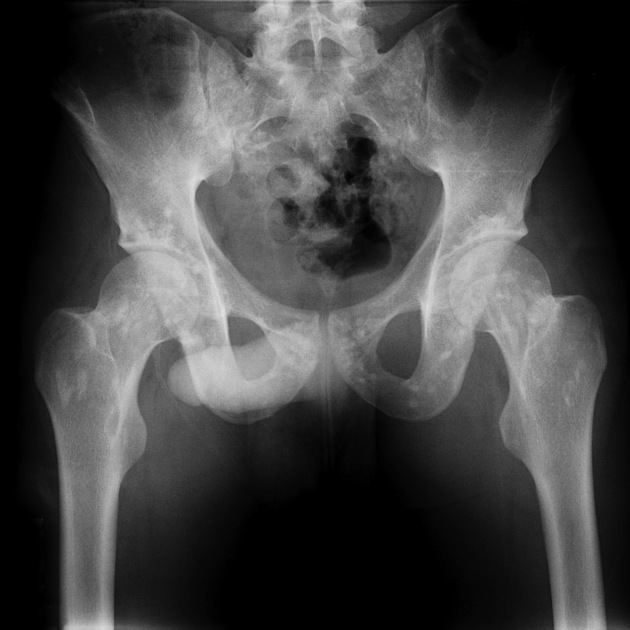Buschke-Ollendorff syndrome (BOS), also known as disseminated dermatofibrosis lenticularis 2, comprises osteopoikilosis associated with disseminated connective tissue and cutaneous yellowish nevi, predominantly on the extremities and trunk 1. Genetic work has linked this syndrome to both isolated osteopoikilosis and melorheostosis 1.
On this page:
Epidemiology
The exact prevalence is unknown but Buschke-Ollendorff syndrome is believed to affect around 1 in 20,000 individuals 4.
Clinical presentation
-
cutaneous manifestations: small connective tissue nevi also called dermatofibrosis lenticularis disseminata
these mostly affects the torso and extremities and can be made of elastin or collagen fibers or may be entirely fibrous.
they do not itch and are painless
-
non-cutaneous manifestations
amblyopia or strabismus
short stature
cognitive delays
Pathology
Etiology
It is caused by a loss‐of‐function mutation in LEMD3 at 12q14 (OMIM 607844). The exact mechanism by which LEMD3 causes lesions is not yet understood (c. 2019) . This gene codes for the inner nuclear membrane protein, LEMD3, which interacts with both the BMP and TGF-beta signaling pathways 5.
Radiographic features
The two main radiographic entities that are seen with this condition are osteopoikilosis and melorheostosis ref.
Treatment and prognosis
surgical excision of the connective tissue nevi for cosmetic reasons ref
surgical treatment of deafness, if indicated, such as implants ref
management of associated conditions (e.g. diabetes mellitus, aortic stenosis) ref
a leading cause of mortality is the development of areas of bone density into osteosarcoma, chondrosarcoma or giant cell tumors ref
History and etymology
Buschke-Ollendorff syndrome was first described by:
Helene Ollendorff Curth: German-American dermatologist (1899-1982), Ollendorf was her maiden name 2
Abraham Buschke: German dermatologist (1868-1943) 3
Hans Theodor Schreus: German dermatologist and radiologist (1892-1970) ref





 Unable to process the form. Check for errors and try again.
Unable to process the form. Check for errors and try again.